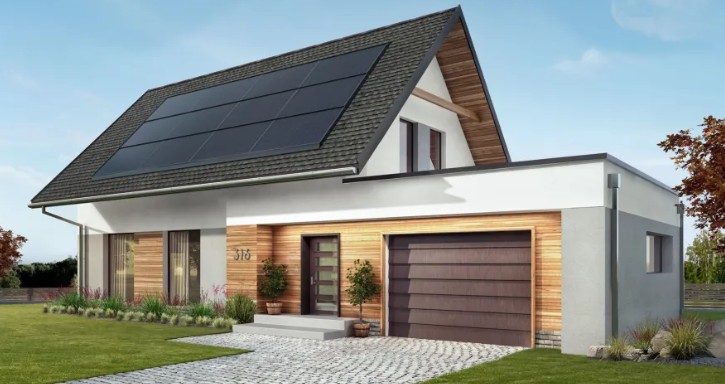
Reprinted via EarthTalk®, From the Editors of E – The Environmental Magazine
How can homeowners make their homes greener and more efficient to cash in on rebates and incentives available under Biden’s Inflation Reduction Act?
The White House’s 2022 Inflation Reduction Act created $8.8 billion in tax credits and rebates to help lower- and middle-income homeowners contribute to the country’s emission reduction goals.
Federal tax credits
The bulk of these incentives come from federal tax credits which, like the act’s state-based rebates, are available through September 2031, and can be applied retroactively to purchases or installations after August 2022.
The Residential Clean Energy Tax Credit covers up to 30 percent of installation costs for alternative energy sources including solar panels, small wind turbines, geothermal heat pumps and battery storage systems.
The $3,200 Energy Efficient Home Improvement Credit, on the other hand, covers upgrades to existing energy sources. The credit can be applied with a cap of $1,200 to new windows and skylights (up to $600), new doors (up to $500), and improvements to insulation (up to 30 percent).
Rebates in your state
Out of the 23 total states that have applied for funding to provide their residents with rebates, eight have recently been approved: Arizona, California, Hawaii, Indiana, Maine, New Mexico, Rhode Island and Washington. Two more, New York and Wisconsin, have already begun distribution of the rebates and The Department of Energy expects that several states will join later in 2024.
The Home Efficiency Rebate Program (HOMES), offers rebates of up to $8,000 and $4,000 respectively for low- and middle-income households that can cut energy usage by 35 percent or more.
The Home Electrification and Appliance Rebate boasts a cap of $14,000 in rebates per household and is expected to follow implementation of HOMES. Under HEAR, low and middle income homeowners can expect 50-100 percent point of sale coverage on several appliances including up to $8,000 for electric heat pumps; $1,600 for insulation and air sealing; $2,500 for electric wiring; and $840 for electric stoves, ovens and heat pump clothes dryers.
Cut emissions and save money
Energy upgrades have the potential to save homeowners money year after year, beyond rebates from installation, because a more efficient home will reduce your energy bills.
Furthermore, green homes can qualify for benefits such as a $5,000 tax credit if they meet the Department of Energy Zero Energy Ready Home standards. A qualified home energy auditor can help homeowners looking to cash in on the myriads of incentives determine which upgrades fit best with their homes and budgets.
The IRS maintains a list of credits and deductions, here, which can also apply to businesses upgrading their offices.
It also lists Clean vehicle tax credits, if you are in the market for a new or used car—and want to go green.
SASSY SOLAR SOLUTION: Solar Panels That Make Electricity at Night are Finally Here – And They’re Cheap and Don’t Need Batteries
As with prior legislation, this law defines lower- and middle-income Americans as those making 150 percent or less of their Area Median Income, or the midpoint of their local area’s income distribution.
Plan ahead to file your taxes next year to include the Residential Energy Credits—even if you did the upgrades on your home last year. Use Form 5695, which you can learn about here.
EarthTalk® is produced by Roddy Scheer & Doug Moss for the 501(c)3 nonprofit EarthTalk. See more at emagazine.com. To donate, visit Earthtalk.org. Send questions to: question@earthtalk.org.



















